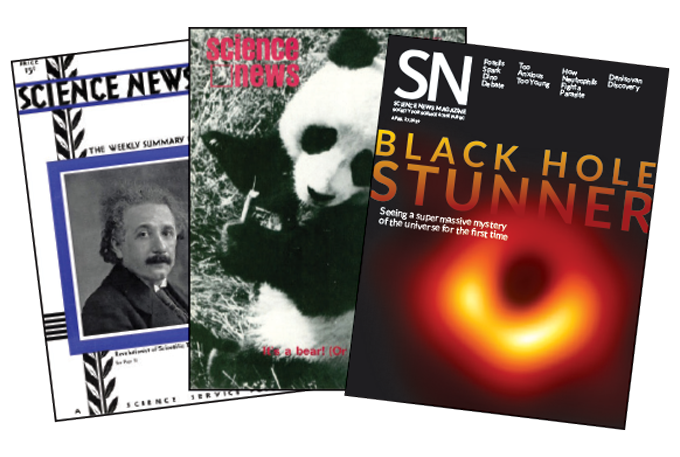Charting a course for the future of Science News

By Nancy Shute
Editor in Chief
- More than 2 years ago
When Science News got its start in 1921, our founders knew that the surest path to deliver the latest news of science was through the dominant media of the day: newspapers. Our first iteration, Science News Bulletin, was mailed to subscribing newspapers across the country. Soon, librarians, teachers and science buffs asked if they could subscribe too. To meet that demand, in March 1922 the editors launched a new consumer publication, Science News-Letter (SN: 3/26/22, p. 16). That was the first iteration of the magazine you read today.
And in 1924, they launched yet another new product: “Science News of the Week” scripts that announcers read on local radio stations. Radio had just debuted; the first commercial broadcast was in 1920. The editors were clearly eager to embrace this revolutionary technology. By the 1930s, we were on the air nationwide, partnering with CBS on the Adventures in Science show, featuring editor Watson Davis interviewing scientists about the latest discoveries.
If I could tell our editorial forebears that nowadays most people read Science News on their mobile phones, I bet they’d be fascinated by the technology and the possibilities for connecting people with science anywhere, anytime.

I’d explain that people can find our journalism not just through the magazine and website, but also via RSS feeds, Twitter and Facebook. Email newsletters bring the science straight to people’s inboxes, and our YouTube channel draws more than 200,000 views a month. Video on a phone? Imagine that.
I’d also say that to better serve our varied audiences, we’re expanding our efforts on Instagram and TikTok, where vertical videos are wildly popular with teens and young adults — the next generation of science fans. I’d note that we also have coverage tailor-made for young people and teachers, through our Science News Explores website and print magazine and the Science News Learning program, which delivers the latest news and educator materials to more than 5,000 schools across the United States.
And I’d say that while we don’t know what new technology will disrupt the news industry next, we’ll be ready for it. This summer, we’re embarking on a strategic planning process that will help us chart our path forward for the next three to five years. We will continue to deliver top-quality journalism in written form, develop innovative new products and build a business model that sustains us through the ongoing turbulence of the media economy.
I’m as excited about the future of Science News as I’m sure those very first editors were. It wouldn’t be possible without you, our loyal readers. Stay tuned!